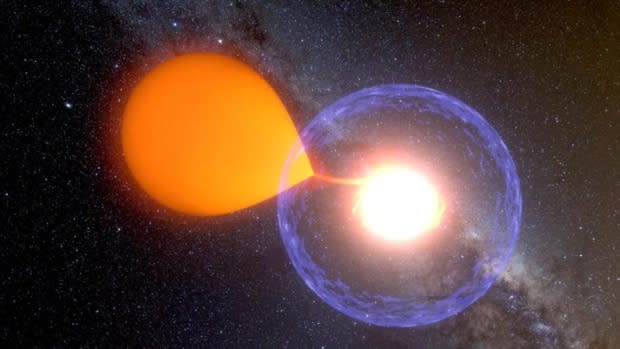Rarely recorded nova caught on tape with the help of Sackville professor
Mount Allison University professor Catherine Lovekin is part of an international team of researchers that managed to capture the clearest recording yet of the complete life cycle of a nova.
Using a network of five nano-satellites, the BRITE-Constellation team tracks the brightest stars in the sky and how they interact with their environment.
"It was kind of luck," Lovekin said.
"We can use the light variations from a particular star to try and understand various process inside the star, or surrounding the star and it just happened that in one of the fields we were looking at, there was a nova."
A nova is the sudden increase in the brightness of a star.
"Things get really bright and hot and then it fades away and the whole process starts over again."
"And that's what we caught purely by coincidence," said Lovekin.
According to Lovekin, what normally happens is satellites pick up new events in the universe and send out notifications, but it takes a few days before researchers can get their telescopes pointed in the right direction.
"We don't find them in time, we can't get telescopes organized to look at them fast enough to see all those details we've already missed by the time we've found the object," said Lovekin.
"But this one...we caught the very beginning."

Lovekin said the satellites are 10 centimetre cubes that download data to ground stations. Then the information is sent out to whoever would like to look at it.
"I sit in front of my computer and do all kinds of analysis."
Apart from the excitement of capturing never before seen data, Lovekin said the information researchers now have can be used to better understand the universe.
"We're not entirely sure why some stars undergo a supernova and some undergo a nova, which can happen again if we watch this system long enough. We might see another outburst like this."
Lovekin said the satellites captured the outburst over about 150 days.

